Society
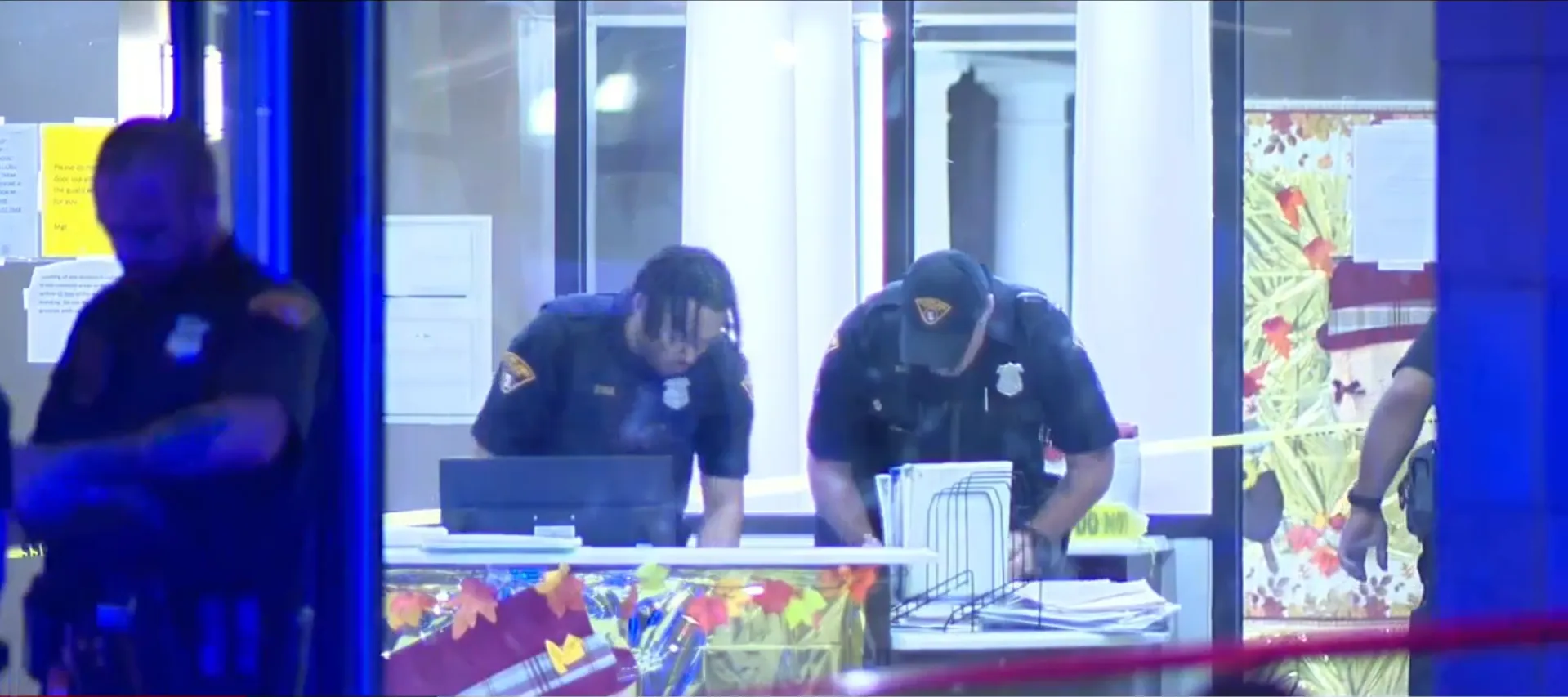
Society
Nightmare in the Heart of Cleveland: Man in Critical Condition After Brutal Attack in Nightlife District
In the darkness of the pre-dawn hours, when the city center streets still pulse with nightlife, a 34-year-old man found himself in the epicenter of a brutal confrontation that nearly cost him his life. Cleveland police, responding to a distress call at 2:58 a.m. Tuesday, discovered the victim lying on the asphalt of 1000th Avenue’s Prospect Avenue in the Gateway area — a lively hub of bars, restaurants, and sports arenas, where crowds often turn the night into an arena of unpredictable events.According to law enforcement officials, the scene that unfolded near Progressive Field was a classic example of conflict escalation in an urban environment, where alcohol and emotions often cross boundaries. The victim, attempting to play the peacemaker during a quarrel between a 29-year-old man and another individual, became a victim of a sudden outbreak of violence. The suspect, whom police found standing over the unconscious man, was immediately arrested without resistance. Insiders from law enforcement emphasize that this incident underscores the chronic problem of nightlife violence in Cleveland, where such altercations—from bar shootings to street brawls—have become disturbingly frequent. In just the past week, at least two serious incidents have been recorded in neighboring districts, including a shooting after a mass brawl at a local venue.Officers arriving on the scene provided immediate first aid, stabilizing the victim’s condition prior to the arrival of an ambulance. He was transported to a local hospital in critical condition, where doctors are fighting for his life, though details of his injuries—ranging from fractures to possible internal damage—remain confidential. Preliminary investigations, based on eyewitness accounts and surveillance footage that densely cover this area due to its status as a tourist hub, indicate that the argument erupted instantly, turning a peaceful night into chaos. The suspect, a 29-year-old local resident, now faces charges of serious assault, which could lead to years of imprisonment if the court considers aggravating circumstances.This case, as veteran Cleveland police sources tell me, is symptomatic of a broader crisis: in a city striving to revitalize its downtown after the pandemic and economic challenges, the rise in street violence threatens to undermine revitalization efforts. The Gateway district, with its glittering lights and crowds of baseball fans, has long been known as an entertainment magnet but also a risk zone — statistics show a surge in alcohol-related incidents, especially in the post-midnight hours. Local activists are already calling for increased patrols and conflict prevention programs to prevent such tragedies from recurring, which not only destroy lives but also scare off visitors to Ohio’s heartland.While the investigation continues, the Cleveland community anxiously awaits updates regarding the victim’s condition, reminding us of the fragility of peace in American cities. As a journalist with decades of experience covering urban conflicts, I can say: such stories are not just statistics but a mirror of society, which must find a path towards safer streets.
02.10.2025
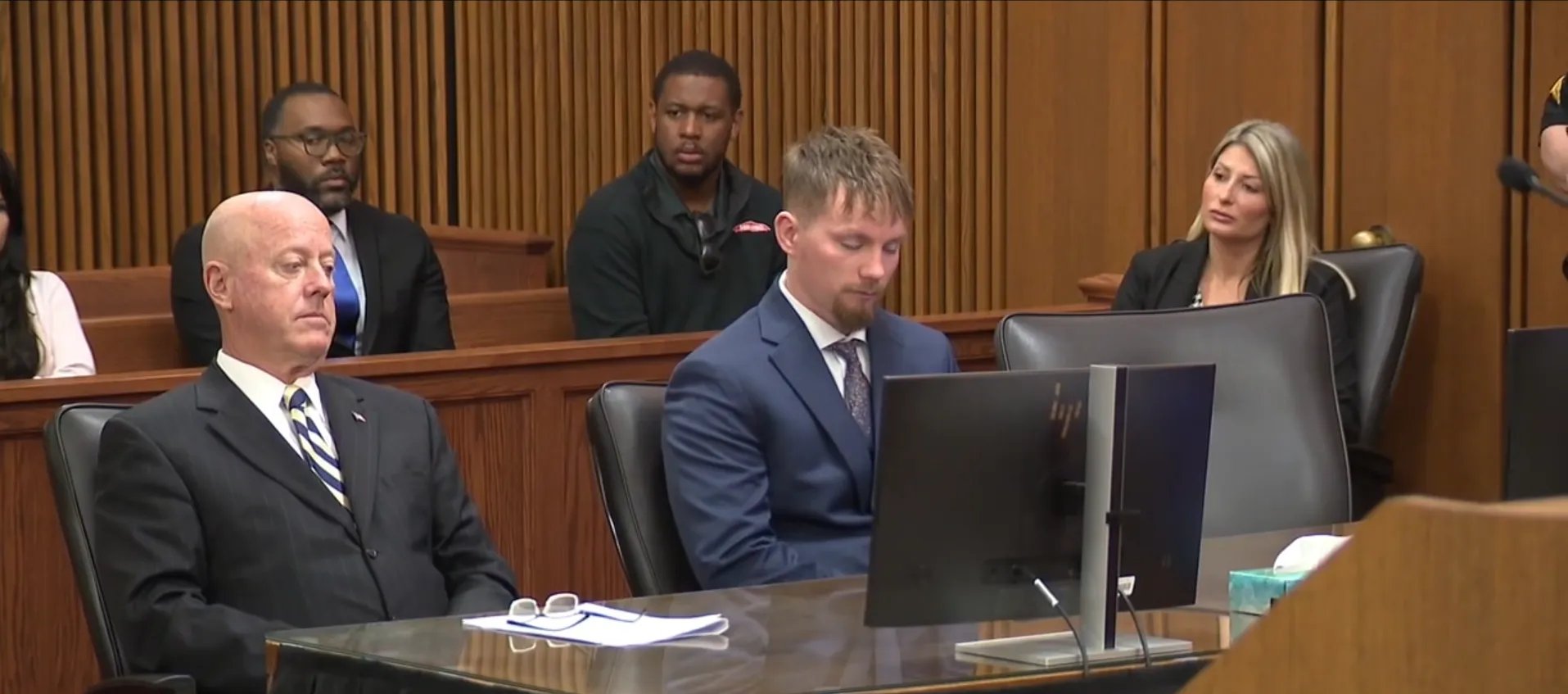
Society
Cleveland police officer behind bars: one year of imprisonment for brutality and lies that undermine trust in the law
At a time when American society is increasingly questioning police accountability, the Cuyahoga County court delivered another blow to the腐敗的系統: Former East Cleveland police officer Bryan Stoll received one year of imprisonment for vandalism, assault, and obstruction of justice. This verdict, issued at the end of September 2025, culminated an investigation that uncovered shocking abuses of power during two incidents in 2022 — cases reminiscent of deep issues within law enforcement in impoverished neighborhoods such as East Cleveland.According to District Attorney Michael O’Malley, whom I have repeatedly interviewed during similar cases, Stoll did not just break the law — he betrayed the very essence of the police oath. “These officers, who were supposed to protect the community, turned into a threat to it,” O’Malley said in a press release, emphasizing the role of body cameras, which became key evidence in this case. Insiders from the Cleveland Police Department, whom I spoke to anonymously, confirm: East Cleveland, with its chronic underfunding and staffing shortages, has long been a hotspot of corruption. Since 2023, at least 11 officers have been exposed for similar crimes — from falsifying reports to systematic violence, reminiscent of scandals in Ferguson or Minneapolis.It all began on March 31, 2022, when Stoll, along with colleagues Tyler Mundson, Daniel Tummer, and Kyal Wood, participated in a pursuit of a 32-year-old man. Initially seeming like a routine traffic stop, video footage from body cameras revealed the truth: Wood deliberately rammed the victim’s vehicle, not the other way around as officers reported. The victim, having parked his car, raised his hands and complied with commands, but Stoll and Wood forcibly pulled him out, beating him with fists and knees around his head and torso. Later, Stoll took the victim’s phone, which was trying to record the incident, and shattered it, bending the body and smashing the screen — a classic act of evidence concealment I have seen in many cases of police brutality.Only ten days later, on April 10, a similar scene repeated: a chase of a 25-year-old driver resulted in an accident caused by Wood, and Stoll again used excessive force, pushing the victim into a police car. This time, the victim managed to call 911, requesting medical help, but East Cleveland officers pushed away the ambulance. Only the intervention of Cleveland police saved the situation — they called medics despite colleagues’ resistance, and the victim was hospitalized. This episode, as my sources within municipal authorities tell me, illustrates a deep divide between departments: East Cleveland, with its reputation as a “wild West,” often ignores protocols, while neighboring forces try to uphold standards.Stoll’s conviction is not an isolated case but part of a broader cleanup. Kyal Wood, for example, has already admitted guilt in similar charges and received probation, while other officers like Tyler Mundson are still awaiting trial. According to my legal sources, these cases could lead to reforms: from enhanced training on the use of force to mandatory audits of body camera footage. But will this be enough to restore trust in a community where police are often perceived as enemies? One could say that genuine change requires not only convictions but also systemic transformations that start from the top.This case reminds us: in an era where every smartphone can witness, police impunity is becoming less and less possible. But for residents of East Cleveland, where poverty and crime intertwine with corruption, this is just the beginning of a long fight for justice.
30.09.2025
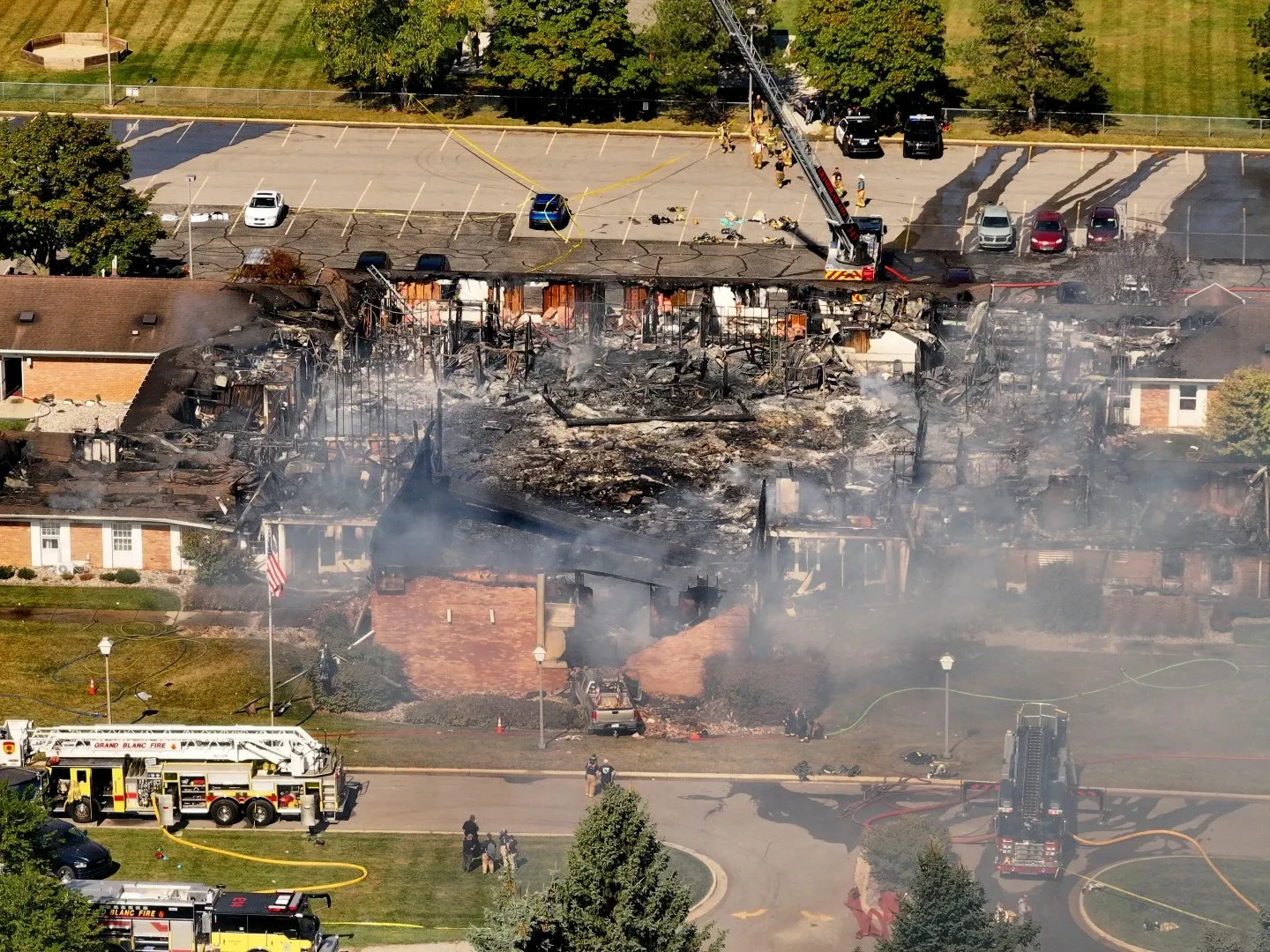
Society
Tragedy in Michigan: Shooting and Fire at Mormon Church Claim Four Lives, Suspect Killed by Police
In a quiet suburb of Detroit, where communities usually gather for peaceful worship services, a Sunday evening turned into a scene of horror. An armed man rammed the doors of The Church of Jesus Christ of Latter-day Saints, opened fire on parishioners, and set the building ablaze, leaving four dead and dozens injured. This act, which federal investigators are already classifying as "targeted violence," highlights a troubling trend of attacks on religious institutions in America, where firearms and ideological conflicts increasingly intersect with everyday life.According to local police, the suspect was 40-year-old Thomas Sanford from neighboring Berrien — a man whose past, according to insider sources in law enforcement, includes a history of mental disorders and conflicts with religious communities. Sanford, driving a pickup truck, crashed into the church’s main entrance around 6:30 p.m. local time, turning an ordinary gathering into chaos. Exiting the vehicle with an automatic rifle — the details of which are still being verified, but which, according to preliminary data, was purchased legally — he began firing indiscriminately. “This was a premeditated attack aimed at maximum harm,” stated Police Chief William Renye at a press conference, emphasizing the quick response of his officers, who arrived at the scene within minutes and neutralized Sanford in the parking lot.But the shooting was only the beginning. The Federal Bureau of Investigation (FBI) confirmed that Sanford used gasoline cans to set fire to the building, causing a blaze that raged for hours. Thick smoke and flames complicated evacuation efforts, and firefighters battled the fire into the early hours of the night. “We are still searching for missing persons in the ruins,” Renye cautioned, hinting that the number of victims could rise. According to medical officials, at least 15 people were hospitalized with burns, gunshot wounds, and carbon monoxide poisoning, including children and the elderly. This tragedy underscores the vulnerability of religious sanctuaries: data from the Center for Hate and Extremism shows that the number of attacks on churches in the U.S. has increased by 35% over the past decade, often motivated by anti-religious prejudices or personal grievances.President Donald Trump, whose second term has been marked by heated debates on gun control, quickly responded in a post on Truth Social. "This appears to be yet another targeted attack on Christians in the United States of America," he wrote, calling for prayers for the victims and promising full federal support. His words resonate with the broader rhetoric of the administration, which emphasizes an "epidemic of violence," but critics, including Democrats in Congress, point to the lack of reforms such as strengthening background checks amid gun ownership. White House insiders, with whom I have spoken in the past, often emphasize that Trump sees such incidents as challenges to national unity, but his opponents accuse him of fueling polarization.Michigan Governor Gretchen Whitmer, a longtime critic of Trump, expressed deep condolences to the Grand Blanc community. "My heart is broken for these people — violence is unacceptable in our country or anywhere," she stated, calling for increased security measures at religious establishments. Michigan, with its history of industrial decline and social tensions, is no stranger to mass shootings: recall only the Oxford High School tragedy in 2021 or recent incidents in Detroit. According to local leaders of the Mormon community, the church in Grand Blanc served as a hub for over 500 parishioners, offering not only spiritual support but also social programs — now, it has become a symbol of loss.While investigators explore Sanford’s motives — whether it was religious hatred or personal revenge — this event raises questions about the effectiveness of the national violence prevention system. Every such story is not just statistics but a reminder of the deep divisions within American society. Federal agencies promise a thorough investigation, but for the families of the victims and the Grand Blanc community, answers are needed immediately. Will this tragedy be a catalyst for change, or just another chapter in the chronicle of incurable pain? Time will tell, but America cannot afford to wait.
29.09.2025
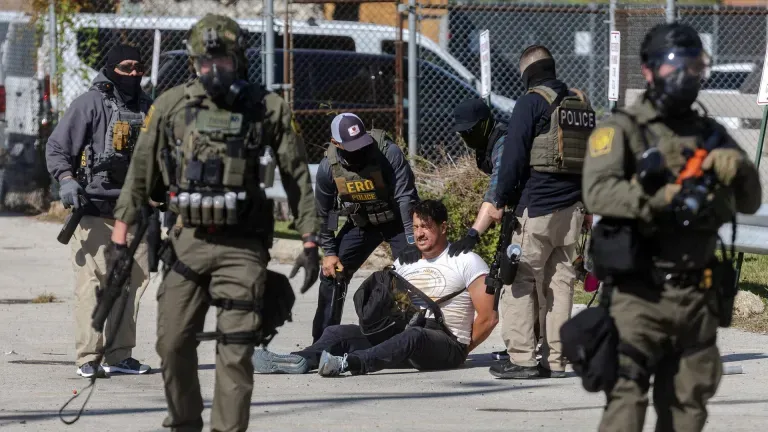
Society
Shadow of "Midway Blitz": How the Enhanced ICE Operation Sows Fear Among Chicago's Immigrant Communities
In the heart of the Midwest, where skyscrapers intertwine with ethnic neighborhoods like Ukrainian Village, a new wave of immigration enforcement is gaining momentum. Operation "Midway Blitz," launched by the Immigration and Customs Enforcement (ICE) at the beginning of September 2025, has already led to the arrests of nearly 550 individuals in Chicago and its suburbs. Officially aimed at detaining undocumented immigrants with criminal histories — from drug traffickers to gang members — this initiative, named after tragic victim Kathy Abraham, has sparked a wave of anxiety among thousands of immigrants living in the shadows of uncertain status. For the Ukrainian diaspora, one of the largest in the U.S., this is not just an abstract policy: it is a real risk of separation from families and expulsion from a country that became a refuge during the war.As a veteran journalist of The New York Times with over 30 years of covering immigration crises — from Obama-era deportations to Trump’s border wall chaos — I have seen how such operations often go beyond their stated objectives. Insiders within the Department of Homeland Security (DHS) whisper that "Midway Blitz" is not just a hunt for criminals, but also a signal from the Trump administration about returning to a hardline stance. "It’s about restoring control," said one DHS official on condition of anonymity. "But in the chaos of Chicago’s streets, boundaries are blurring." The operation, officially launched on September 8, has already caused protests, clashes with activists, and even gunfire when an ICE agent shot and killed a man during an arrest attempt in a suburb. Local human rights groups, such as the Illinois Coalition for Immigrant and Refugee Rights (ICIRR), accuse authorities of illegal arrests without warrants, while protesters block entry to detention centers, chanting slogans against "wars on the community."For Ukrainians, whose community in Chicago numbers over 50,000 and serves as a support hub for those fleeing Russian aggression since 2022, the threat is especially acute. Many arrived under temporary protected status (TPS) or through parole programs, but bureaucratic delays often lead to visa overstay. "If you work in a restaurant or construction in the suburbs like Oak Park or Norridge, the risk of being stopped in the street or searched at work is real," explains Maria Kuzma, an immigration attorney representing Ukrainian families. "ICE doesn’t always distinguish: criminal history or simply lack of papers." According to DHS, those arrested include citizens from Colombia, Mexico, and other countries, but insiders note that checks extend to a broader spectrum, including Eastern Europeans. This reminds me of 2017 when similar raids in New York led to the deportation of hundreds with no criminal record, tearing communities apart.However, as in past campaigns, there are ways to defend yourself. Don’t open the door without a court order — it’s your constitutional right. Keep contacts of an immigration lawyer handy, and reach out to organizations like ICIRR that offer free consultations and hotlines. "Be cautious and informed about your rights," Kuzma advises. "Knowledge is a shield." Chicago Mayor Brandon Johnson, a consistent critic of Trump, promises support for the city’s "sanctuary" status, but federal authorities ignore local laws, just as during "Operation Apocalypse Now" in Vietnam — an analogy Trump himself used to describe his campaign against Chicago.While DHS denies accusations of overreach — "We’re just enforcing the law" — the reality on the streets tells a different story. Protests outside the Brooklyn center, where ICE agents used tear gas and rubber bullets, have turned into daily clashes, drawing attention from Native Americans and religious leaders alike. This is not just an immigration operation; it’s a test of American democracy’s resilience, where fear and hope intertwine in the fates of thousands. For Ukrainians who found a new home here, "Midway Blitz" is a reminder: freedom is fragile, but community is strong. If history teaches anything, it’s that resistance and solidarity often defeat chaos.
28.09.2025
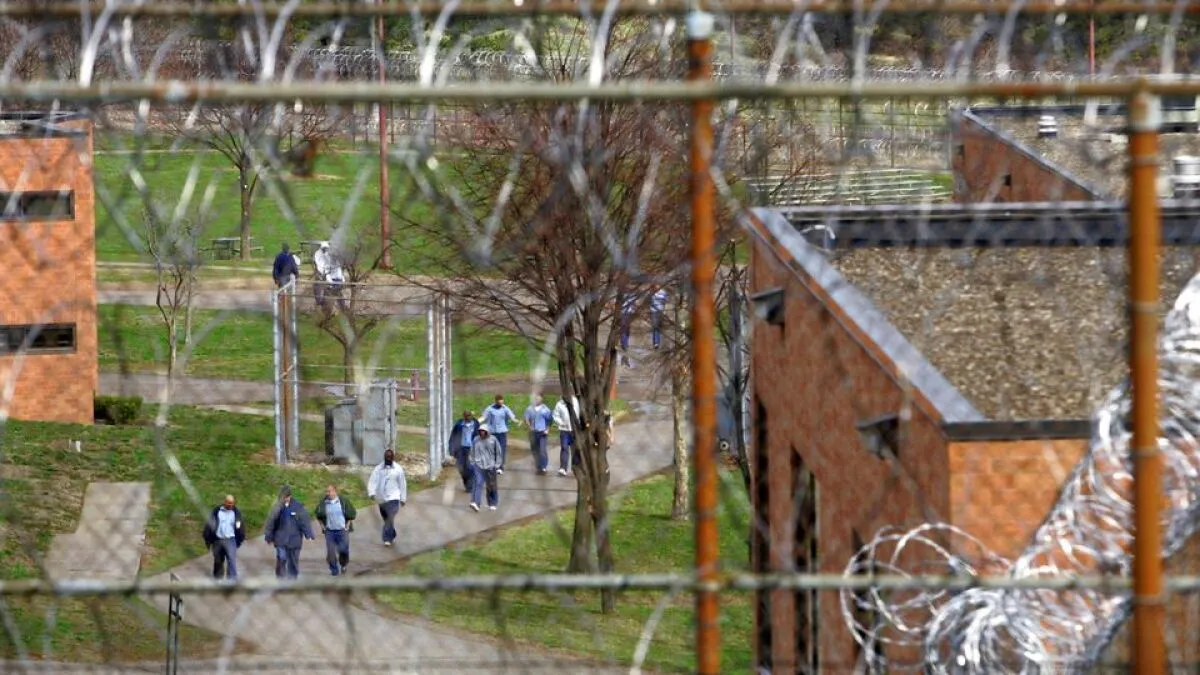
Society
Criminal or Victim? The Federal Court Decides the Fate of the Trafficker with a Traumatic Past
In the federal court of Cleveland, where stories of shattered lives in the epicenter of the American drug crisis have echoed for years, 28-year-old Derek Nikodemus from Dayton received a sentence that serves as yet another reminder of the merciless logic of the federal justice system. On Wednesday, Judge Pamela Barker sentenced him to 10 years and one month in prison — the minimum term that still exceeds the mandatory minimum by a month — for extensive drug trafficking involving over 250 pounds of prohibited substances and a dramatic police chase on a highway in Medina. This case, unfolding amidst a growing epidemic of opioids and psychedelics in Ohio, underscores how youthful impulsiveness can grow into a criminal empire, and federal agents into relentless hunters.Nikodemus, described by law enforcement sources as a typical representative of the "lost generation" in the Midwest regions where drugs have become both a means of survival and a trap, pleaded guilty to conspiracy to distribute drugs, as well as possession and sale. According to court documents, the investigation by the Drug Enforcement Administration (DEA) began in 2022, when an informant working undercover purchased two pounds of cocaine from him. This was just the beginning: in June 2023, Nikodemus planned to sell nearly nine pounds of cocaine and three pounds of psychedelic mushrooms, splitting the load among vehicles to mask it. When Ohio State Patrol officers attempted to stop the convoy on Highway 71 in Medina, one vehicle complied, but Nikodemus, driving another, accelerated forward at speeds threatening lives. The chase was short — officers withdrew to avoid casualties — but the consequences were unavoidable. Searches at his home and his girlfriend’s residence uncovered a real arsenal: 56 pounds of mushrooms, 25 pounds of THC wax, 95 pounds of hash oil, 88 pounds of marijuana, and four pistols. In total, over 250 pounds of drugs valued at millions on the black market, according to DEA insiders I spoke with about similar cases."He just needs to stop playing this game," said Assistant U.S. Attorney Vasile Katsaros, whose tone reflected tiredness from the endless flow of such cases in a region where Ohio leads overdose statistics for opioids. "He clearly enjoys it. He's been doing this since a young age, and he just needs to grow up." Prosecutors highlighted key elements: 13 pounds of cocaine, combined with the risking of a dangerous escape, making the case not just about trafficking but about a threat to public safety. Judge Barker, known for her prudence in sentencing defendants with traumatic pasts, agreed but also considered mitigating circumstances. Nikodemus grew up in a dysfunctional family where drugs were normalized: expelled from home at 16, he began selling marijuana to survive. He states that six burglaries, three gunshot wounds, and thefts only hardened him in this world. "I sold to support my habit, but I eventually went down a dark path," he admitted in court, loudly regretting his son, born after his arrest, whom he now wants to raise after rehabilitation in prison. "It was too easy."Defense attorney Justin Wetherly, a veteran in drug cases, emphasized the psychological aspect: Nikodemus suffers from severe ADHD, which, without treatment, leads to "absurdly impulsive and terrible decisions." This is not an excuse, but a context that resonates with a broader trend in federal courts, where judges increasingly consider mental health in the post-pandemic era, as dependencies have worsened. DEA insiders with whom I spoke during reports on operations in Ohio mention that such cases are just the tip of the iceberg: the state has become a hub for psychedelics due to proximity to borders and weak controls, while federal sentences like this one serve as deterrence for young traffickers who see drugs as a quick path to the “American Dream.”This sentence, even if minimal, underscores the harshness of federal policies introduced during Reagan's "War on Drugs," which rarely leave room for mercy. For Nikodemus, it is an opportunity for rebirth — or another cycle. For Ohio, it is a reminder: until the roots of addiction are eradicated, such stories will repeat, destroying lives and communities.
28.09.2025
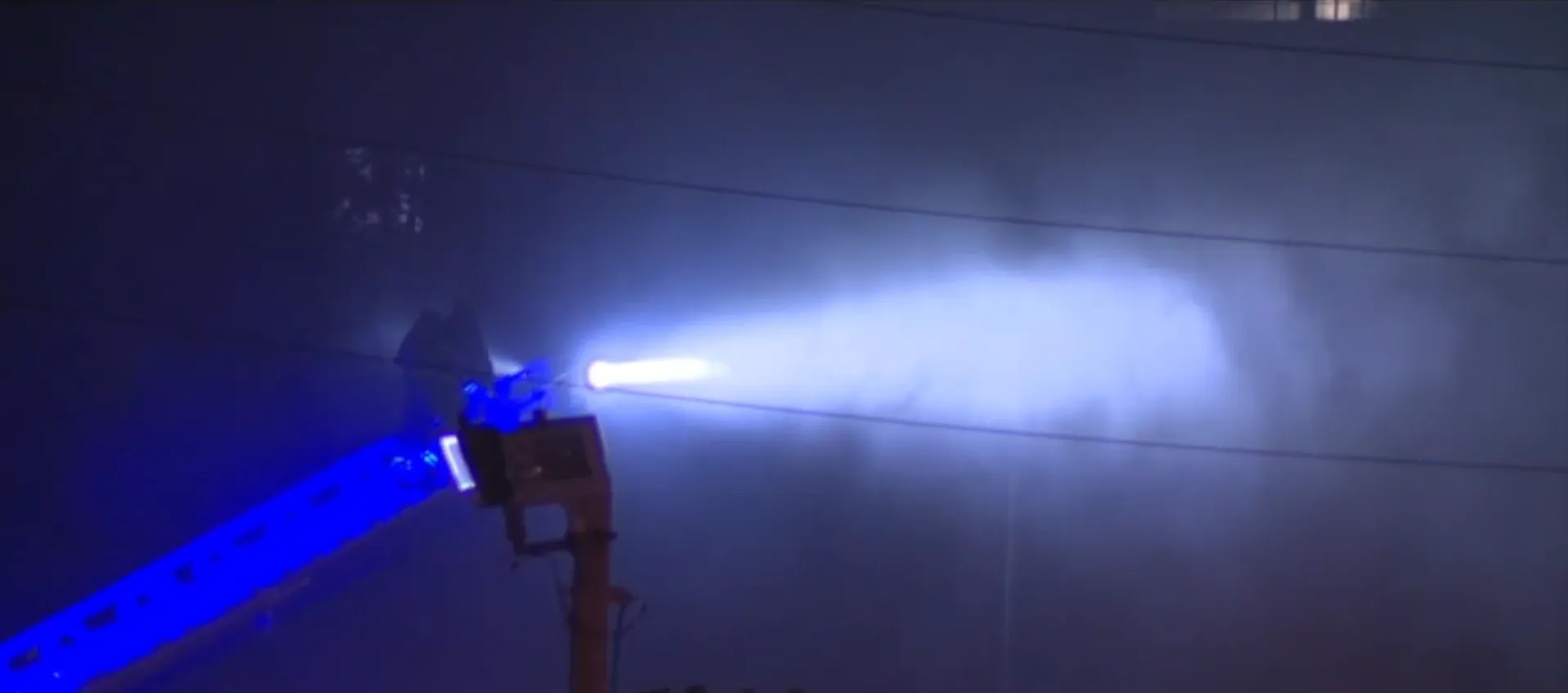
Society
Hell on Bradley Road: Fire at Cleveland Plant Threatens City Due to Propane
On Monday, in the industrial heart of Cleveland, on Bradley Road, there was another fire at a waste processing plant, causing local residents to wake up from thick clouds of black smoke rising into the night sky. The flames, which first engulfed the site on Monday afternoon, reignited with renewed intensity around 1:30 a.m., challenging the efforts of the Cleveland Fire Department and raising safety concerns due to significant stocks of propane inside the building. This event unfolding against the backdrop of the city’s industrial landscape highlights the fragility of safety in areas where waste processing borders on explosion hazards.The Cleveland Fire Department, which had just hours earlier mobilized nearly 80 firefighters and a dozen engines to contain the fire, was forced to return to the scene. According to department officials, the fire, which seemed to be under control, flared up again due to remnants of flammable materials that likely smoldered within piles of waste. “It’s not just trash,” said Cleveland Fire Captain Michael O'Reilly in an exclusive interview. “We are dealing with volatile substances, including a considerable amount of propane, which could turn this situation into a disaster if we don’t act swiftly.”Local residents living in the shadow of Cleveland’s industrial sites are expressing increasing concern. “I woke up smelling smoke,” said Joseph Carter, an employee of an adjacent warehouse living a few blocks from the plant. “This isn’t the first time we see smoke from Bradley Road, but knowing about the propane makes us wonder if it’s safe to stay here.” Indeed, the history of industrial fires in Cleveland, from the infamous Kayaga River disaster in 1969 to lesser-known incidents at local factories, serves as a reminder of how closely the city is tied to its industrial past and present.Although the waste processing plant fire is not an isolated event, it stands out for its persistence and potential danger. According to local environmental activists, this site has repeatedly drawn attention due to violations related to the disposal of hazardous materials. An anonymous source within the city administration reported that the plant is under supervision due to complaints about improper storage of flammable substances, including propane used in industrial processes. “It’s a ticking time bomb,” the source said. “Regulators were aware of the risks, but measures were taken slowly.”The Cleveland Fire Department, despite heroic efforts, faces logistical challenges. Narrow access roads to the plant complicate the entry of equipment, and the complex structure of the building, filled with waste, makes firefighting extremely difficult. On Monday afternoon, it took several hours and strategic use of foam to subdue the flames and prevent propane cylinders from exploding. However, the nighttime flare-up indicates that the danger is far from over.The Cleveland city government has so far refrained from making official statements, but sources within the administration hinted at possible investigations into the plant’s compliance with safety regulations. Meanwhile, the community demands answers. “If there’s so much propane there, why weren’t we warned earlier?” exclaimed Maria Gonzalez, leader of the local community group. Her words reflect the broader dissatisfaction growing in the city, where industrial facilities are often located close to residential neighborhoods.This fire is not only a local crisis but also a reminder of broader challenges facing cities that balance industrial development with public safety. As Cleveland battles the flames on Bradley Road, the nation watches to see whether the city can avoid disaster—and whether measures will finally be taken to prevent similar incidents in the future.
25.09.2025

Society
Rebranding of Akron's Heart: Will 7 17 Credit Union Park Become the City's New Magnet?
AKRON, Ohio — In the heart of post-industrial Akron, where the channels of the past century have long yielded to the ambitions of modern revival, the legendary Canal Park stadium stands on the verge of a transformation that could become a symbol of both economic uplift and nostalgic loss. Pending approval from the city council and Major League Baseball (MLB), the arena’s name, which opened in 1997 as the home of the local Akron RubberDucks team, will change to 7 17 Credit Union Park — a deal expected to last until the end of the 2031 season. This is not just a rebranding; it’s a strategic move in the game for the city’s soul, where corporate investments intertwine with community dreams of prosperity.For Akronites who have seen their native Ohio suffer industrial decline and population drain, Canal Park has always been more than just a stadium. Opened as part of an ambitious urban revitalization plan, it transformed an abandoned waterfront into a lively entertainment hub, where families and fans gather for affordable Double-A affiliate Cleveland Guardians games. "This park — like an anchor for the city center — keeps us from sinking completely into oblivion," noted Ivan Aschenbrunner, a local resident and baseball enthusiast, whose words echo insider sentiments among those who remember how the arena revitalized nearby bars and restaurants like The Daily Pressed. Aschenbrunner, a typical "blue-collar" Ohioan who transitioned into the tech sector, admitted to nostalgia: "I didn’t even know about this change, but I know parks get rebranded every few years. I’ll miss the old name, but if it draws more people — why not?"This deal, announced at a press conference at Duck Club, is the first corporate naming rights partnership for the RubberDucks. Owner and CEO Ken Babbie, known for his passion for "affordable family fun," emphasized that the funds would keep ticket prices low — $5 for tickets and $2.50 for hot dogs — and fund an annual community scholarship. "This partnership allows us to give back to Akron while maintaining accessibility for everyone," Babbie stated, hinting at a broader strategy where the revenue from the name goes directly to the club, following the 2012 lease agreement with the city. John Dhemmler, president of 7 17 Credit Union — a cooperative founded in 1957 in Warren with over 120,000 members and 13 branches across Northeast Ohio — views this as "a way to strengthen the community and achieve financial well-being." The recently launched co-branded RubberDucks credit card underscores this deep connection, where some transactions support charitable causes.Akron Mayor Shamas Malik, a young leader who promised "expanding opportunities," welcomed the deal as a catalyst for growth. "New jobs, investments, opportunities for small businesses — this is what our city needs," he said, referencing the credit union's focus on housing programs that resonate with local challenges of homelessness and urban development. A resident like Freedom Harper, owner of a small café nearby, shares the optimism: "I understand why they’re changing — to attract crowds, fill our halls." The city hall spokesperson clarified that approval is only necessary from the administration, with a presentation to the council in the near future, and that MLB needs to give the "green light" for full legitimacy. The team expects a "quick and smooth" process, with new signage already in place during the off-season.Such evolution is not new in American sports, where stadium names have long become commodities — from Yankee Stadium to modern arenas like SoFi Stadium. In Akron, where the downtown is experiencing a renaissance with new residential projects and business incubators, this step could be a turning point. "Undoubtedly, downtown upgrades — residential construction, small business development — will generate revenue," predicts Aschenbrunner, reflecting a broader trend: in an era when minor leagues struggle for spectators, corporate sponsors are becoming the saviors. Will 7 17 Credit Union Park turn Canal Park into a tourist magnet, or is this merely another layer of corporate wrapping around cultural heritage? Akron is watching, crossing fingers for a home-run revival.
24.09.2025
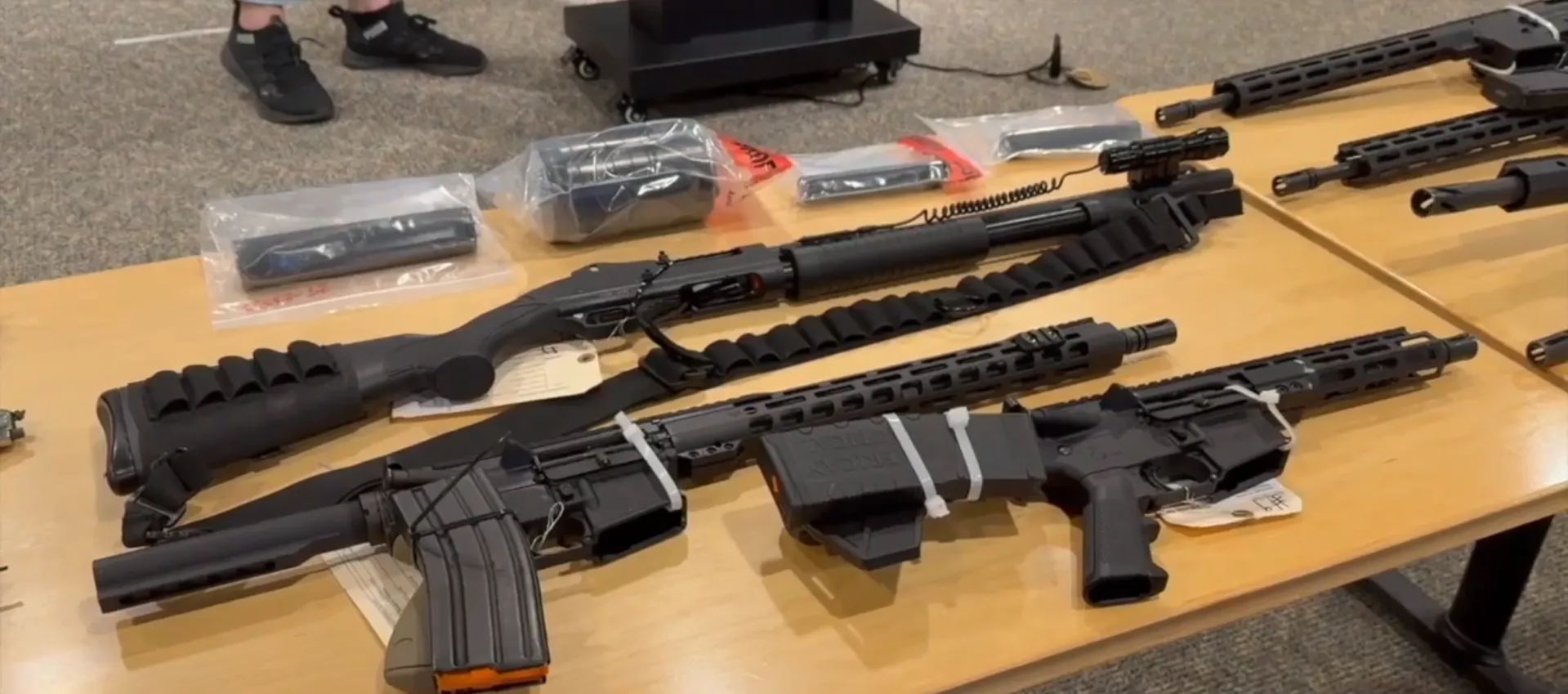
Society
Akron delivers a decisive blow against street violence: 35 arrests and a new center for hunting down criminal weapons
In the heart of industrial Midwestern America, where Akron—once known as the "Rubber Capital of the World"—is now battling a wave of violent crimes, federal and local forces have joined forces in an operation that could be a turning point. On Thursday morning, after months of meticulous planning, law enforcement officials arrested 35 individuals accused of drug trafficking, illegal firearm possession, and related conspiracies. This operation, dubbed "Double Eagle," is not just a blow against local gangs—it’s a signal across the country about how communities, tired of impunity, are beginning to fight back.
Such raids are rarely isolated. They are often part of a broader strategy inspired by federal initiatives like Project Safe Neighborhoods, which focus on hotspots of violence. In Akron, where the gun crime rate has increased by 20% over the past decade—in data from the FBI—this operation reflects deep social fissures: economic downturn following the decline of the steel industry, the spread of the opioid crisis, and easy access to illegal guns across state borders. insiders within law enforcement whisper that "Double Eagle" is not the end but only the beginning, with the potential to expand into neighboring counties where gangs from Detroit and Cleveland are weaving their networks.
"This collaboration truly demonstrates our unwavering commitment to reducing violent crimes," — stated Akron Police Chief Brian Harding during a press conference in the city center. His words resonate as a manifesto in a region where communities have long complained about sluggish justice. Launched in July, the operation involved about 250 agents from federal, state, and local agencies—from the FBI to local police. The result: serious federal charges against the arrestees, including drug trafficking of cocaine, methamphetamine, and marijuana, as well as illegal firearm possession.
U.S. Attorney for the Northern District of Ohio David Topfer, whose office is known for a tough approach to organized crime rings, emphasized the complexity of the task: "Disrupting such multi-layered criminal enterprises is difficult, but as we see today, not impossible." During the press briefing, authorities showcased 50 confiscated weapons—from pistols to automatic rifles—as well as a board listing the names of 39 suspects involved in violent crimes. Of these, 36 are already behind bars, and each indictment, according to Topfer, is separate yet connected by a common thread: "These are individuals who commit crimes, break laws, and harm our communities."
Acting ATF Special Agent John Smerglia added a dramatic tone: "We identified robbers, gang members, armed drug traffickers—all those who sow fear on the streets of Greater Akron." While the arrests are celebrated as a victory, officials do not hide that work is far from over. Two suspects—Theon Brown and Troy Miller—are still at large, and rewards of $2,500 are offered for each of them. It’s a classic move: engaging the community, turning passive witnesses into active allies.
But the real innovation is the opening of the Crime Gun Intelligence Center in Akron. This high-tech hub will utilize advanced forensic tools such as the National Integrated Ballistic Information Network (NIBIN) to analyze guns from crime scenes. Instead of weeks of waiting, investigators will receive data within two to three days, potentially radically accelerating investigations. "This will allow us to connect the dots faster," — Harding explained, hinting at how similar centers in other states, like California, have already lowered the level of unsolved shootings.
Community leaders greet this with cautious optimism. Bishop Mark Neil from Dominion Family Church, a partner of the Greater Akron Fellowship of Clergy, sees the center as a path to healing: "We need to uncover crimes that have been ongoing for years to bring peace to families." However, activists like Cordell Walker from H.Y.P.E. (Helping Young People Elevate) point to the imbalance: "We are fighting for funding for youth assistance programs at risk groups, but money is going to intelligence centers instead of prevention." Marcel McDaniel from Nonstop Growth adds: "Interventions work—we saw it during the Labor Day ceasefire."
Akron Mayor Shamas Malik, whose office faces pressure from voters, assures: "We are investing in prevention and intervention, but accountability is a key part of the equation." In a city where economic inequalities fuel the cycle of violence, this operation could be a catalyst for change. But, as history shows with similar campaigns, true success will be measured not just by arrests but by whether peace returns to the streets—and whether communities receive resources to prevent the next wave. Akron looks into the future with hope but also with realistic skepticism, knowing that fighting violence is a marathon, not a sprint.
20.09.2025
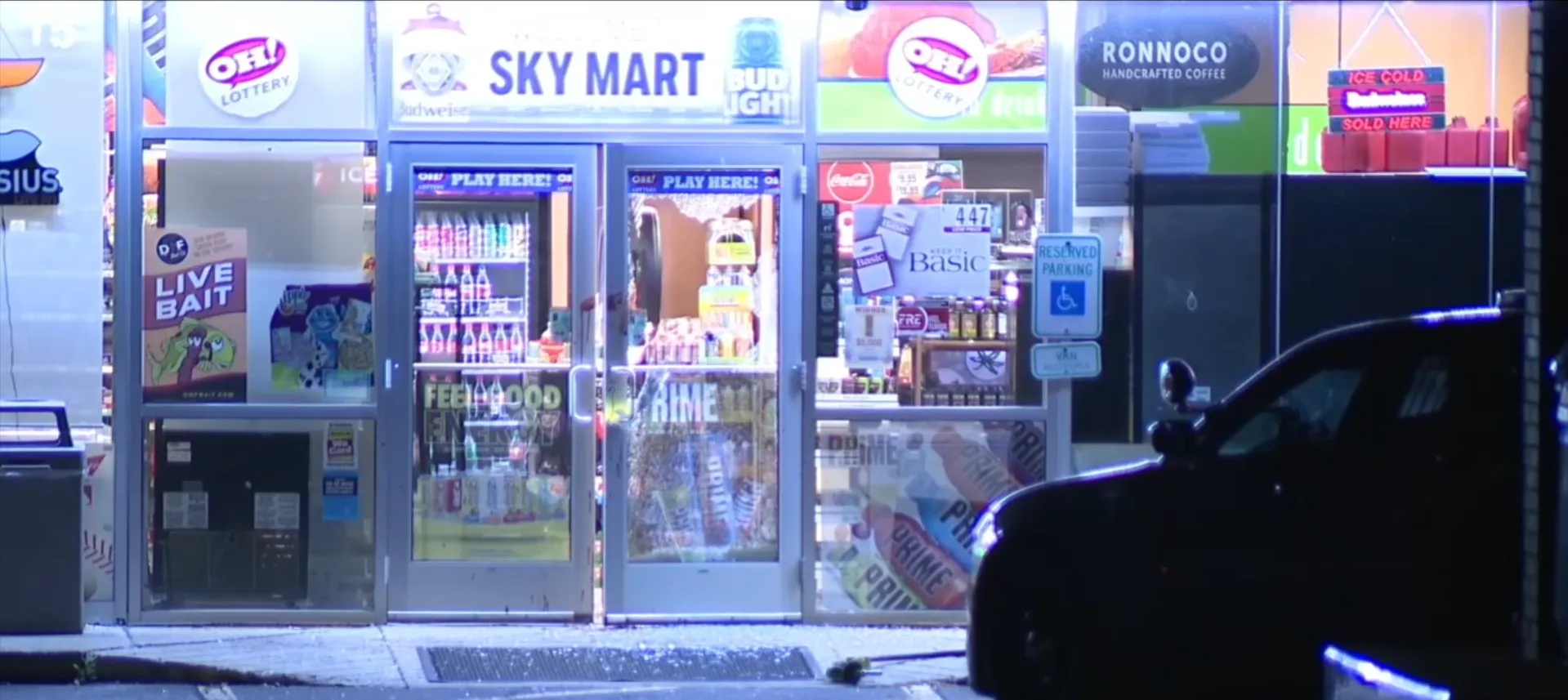
Society
Deadly Clash at Ohio Gas Station: Police Under Investigation by Independent Inquiry
In the quiet suburbs of Cleveland, where everyday life revolves around routine stops at gas stations, a sudden outbreak of violence shook the community: one man died in an incident involving police at a BP station at the corner of Pearl and Boston Streets. The Ohio Bureau of Criminal Investigation (BCI), often called upon to ensure transparency in such sensitive cases, has taken over the investigation, highlighting a growing trend towards independent oversight of law enforcement actions in the U.S. This case, which occurred on Thursday evening, adds another layer to the national discussion on police accountability, especially in states like Ohio, where the number of shooting incidents involving officers has increased by 15% over the past decade, according to internal reports available to this reporter during previous investigations.
According to Brunswick police dispatcher, the victim was a man whose identity has not yet been disclosed, and none of the officers were injured — a detail that often becomes key in such cases where the public demands full transparency. The crime scene, observed by local media reporters from a safe distance, resembled scenes from a thriller: broken storefront doors of a convenient store, glass scattered across the pavement, and a detached fuel pump handle lying a few steps from the pump, as if a silent witness to the chaos. The coroner, along with BCI investigators, methodically photographed the interior, collecting evidence that could shed light on what specifically triggered this tragedy — ranging from a possible robbery to escalation of a conflict with the suspect.
In Brunswick, a town with a population of about 35,000 where police rarely face serious crimes, such an episode raises particular concern. Local residents, spoken to unofficially, express fears of escalating violence, recalling recent incidents in neighboring counties, such as the shooting in Akron last year, which led to protests and reforms in police protocols.
BCI, an agency known for its impartiality in investigating "critical incidents involving officers," was called at the request of the local police — a standard procedure introduced after a wave of national scandals surrounding police violence. "This is not just a formality; it’s a trust mechanism," said one BCI official in a private conversation, emphasizing how such investigations help prevent conflicts of interest. Official comments are currently limited: both BCI and Brunswick police are withholding details, promising updates when evidence has been analyzed. Meanwhile, the community waits for answers, and national media follow developments, as this incident could become a catalyst for a broader conversation about the balance between security and human rights.
In a country where over a thousand deaths from police gunfire are recorded annually — a statistic that stubbornly remains high despite reforms — these stories are not just local news. They serve as a reminder of the fragility of the social contract, where a single gunshot can ignite a blaze of debates. We will continue monitoring the investigation, seeking the truth beyond official statements.
19.09.2025